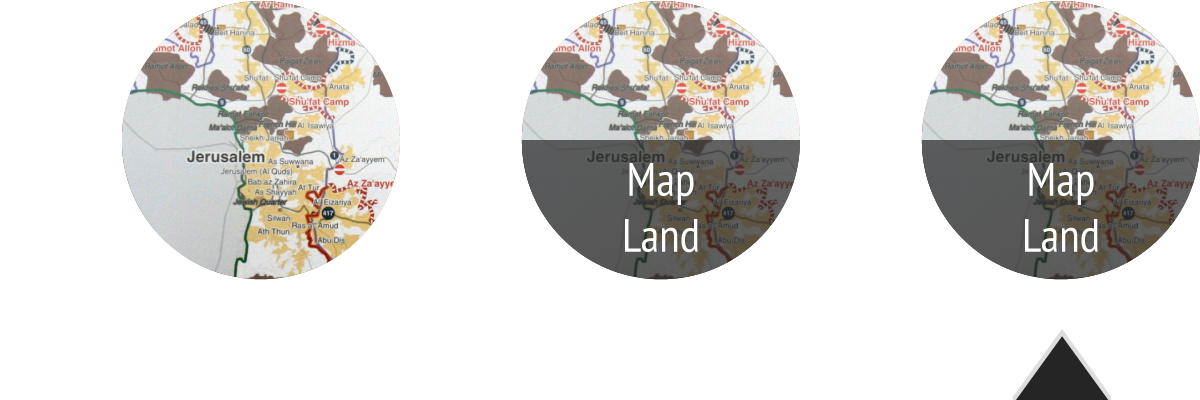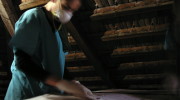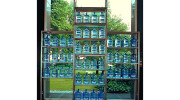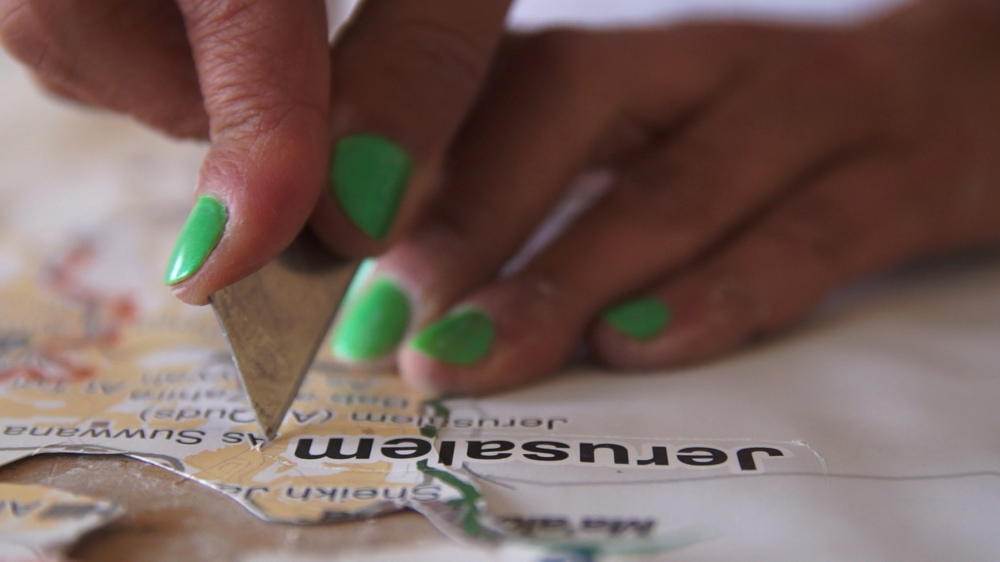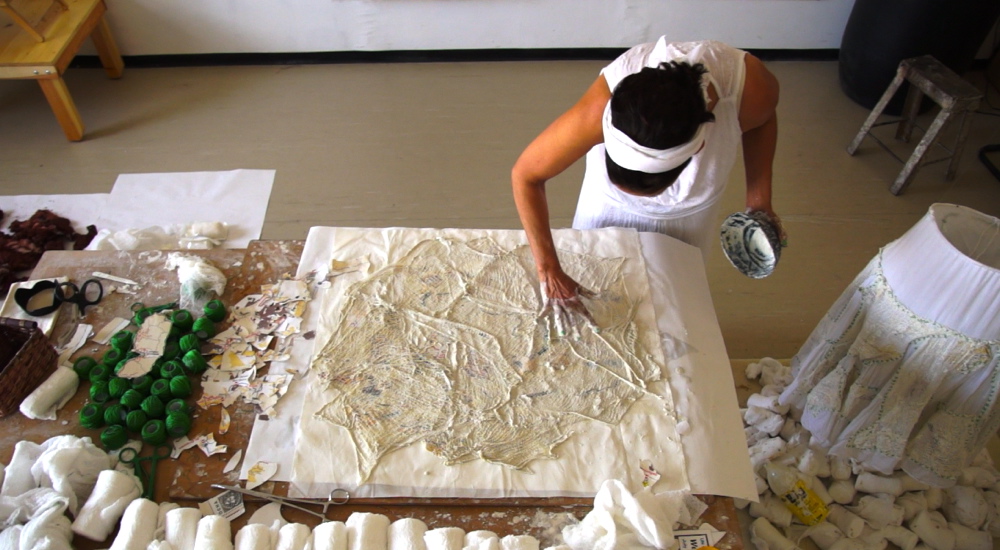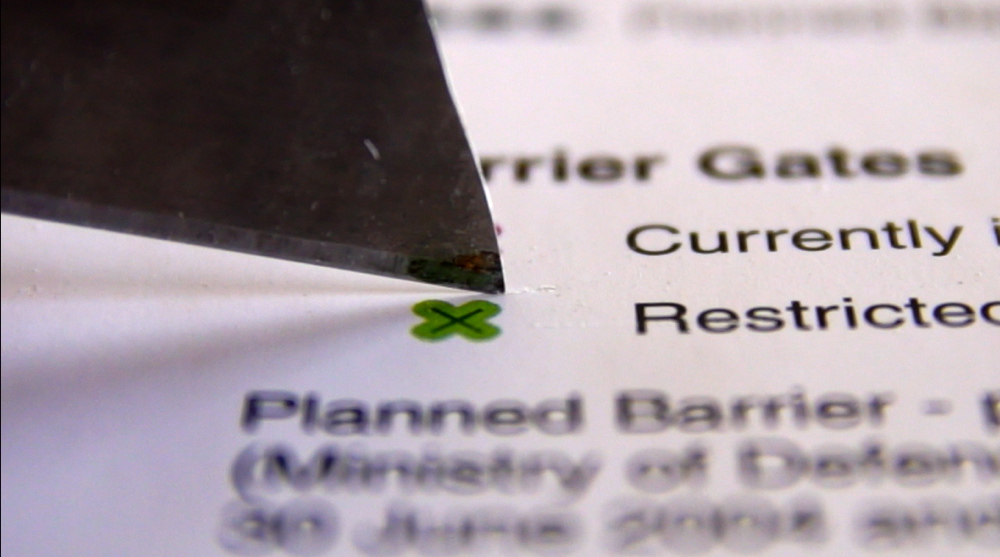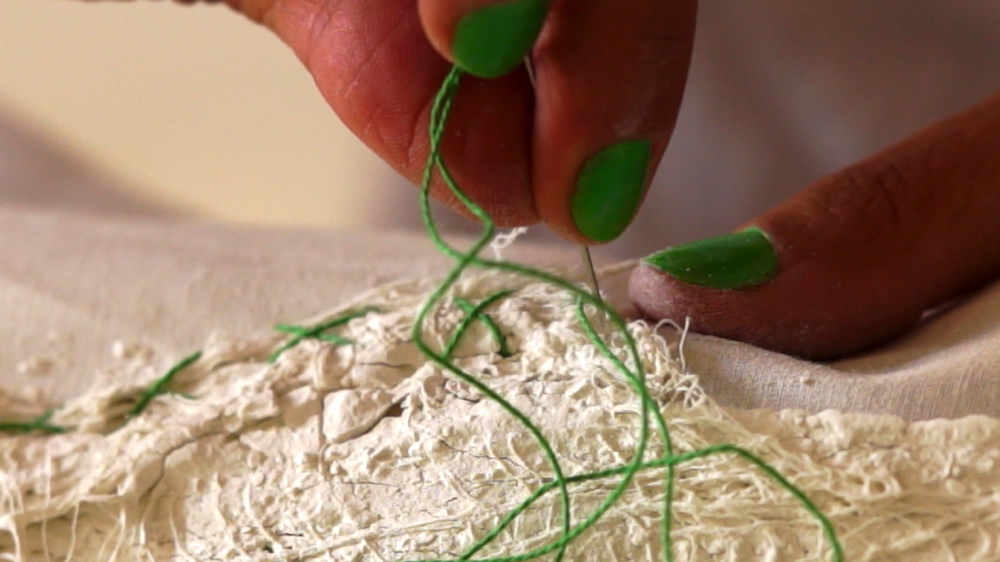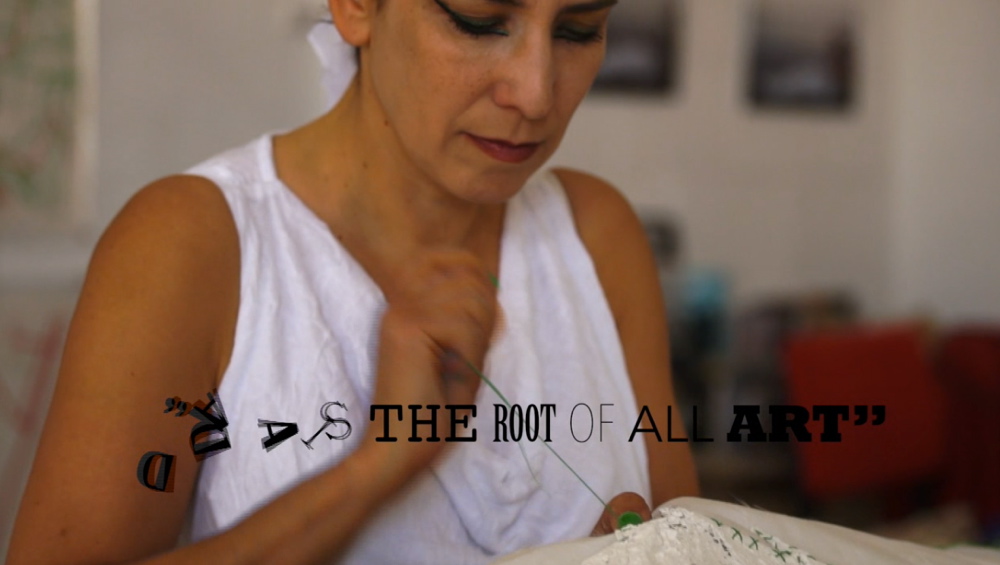DADA-Jerusalem 2014, 2014
DADA-Jerusalem (6’11)
Background:
The de-construction and re-construction of ‘Closure Maps’ of Jerusalem in the ‘Wounded Maps‘ were first created in 2009. In 2011, I sewed one in the Old City of Jerusalem and another one in 2012 at the Cabaret Voltaire in Zurich.
The Cabaret Voltaire had been the very birthplace of the Dada movement in 1916, a revolutionary art movement that stood against the horrors of WWI. It seemed to me the ideal place to re-enact the ‘healing’ process of this meditative sewing.
Whilst creating the ‘Wounded Map‘ of Jerusalem, I realized that I could discard all mapping conventions, producing instead absurd maps. This, similarly to Tristan Tzara who in 1917 had randomly used cut-out words from a daily newspaper to create his first Dadaist poem.
I incised the maps, reshuffling their codes and borders, removing their hegemonic power while reassembling them anew. In doing so, whilst reinventing new symbolic border-scapes, I felt I could overcome the paralyzing effect of violence experienced as a civilian facing situations over which he/she has no control.
The Video:
DADA-Jerusalem incorporating extracts from ‘DADA’, a film by Greta Deses awarded the Palme d’Or at Cannes Film Festival in 1967, brings together the Dada spirit behind the deconstruction and reconstructions of the ‘Wounded Maps‘ of Jerusalem.
Tristan Tzara’s ‘How to make a Dadaist Poem’ creates the link to the deconstruction and reconstruction of the maps in the studio. The black and white paintings by Dada artist Georges Grosz connect to the paintings by veteran Israeli artist Zvi Tolkovsky.
Recitation of Hugo Ball’s ’O Gadji Beri Bimba’, his first abstract phonetic poem, relates to his ‘Elefantenkarawane, first declaimed at the Cabaret Voltaire in June 1916 and re-enacted in Deses’ movie.
The sewing of the Wounded Maps in Jerusalem and in Zurich weaves the thread of DADA-Jerusalem, a film in homage to the artists whom in reaction to the horrors of WWI created the DADA movement at the Cabaret Voltaire.
Created in times of conflict, DADA-Jerusalem revives the timeless Dadaist spirit as best described by Hans Arp:
“Revolted by the butchery of the 1914 World War, we in Zurich devoted ourselves to the arts. While the guns rumbled in the distance, we sang, painted, made collages and wrote poems with all our might. We were seeking an art based on fundamentals, to cure the madness of the age, and a new order of things that would restore the balance between heaven and hell.”
Hans Arp in Dadaland, extract from Hans Richter: Dada, Art and Anti-Art, 1964
Credits:
Script, director and producer: Ariane Littman
Editor: Tamar Gan-Zvi
Original Music & Soundtrack Designer: Marcello Pilewski
Cinematography:
Performance in Jerusalem Old City (2011): Yair Tsriker
Performance at the Cabaret Voltaire (2012): Martin Burr
Performance in the studio (2013): David Atzmi
Extracts from ‘DADA’ a film directed by Greta Deses, awarded the Palme d’Or – Best Short Film in Cannes Film Festival (1967)
First abstract phonetic poem by Hugo Ball: O Gadji Beri Bimba (1916): recited by Daphnee Littman-Cohen
Paintings by Artist Zvi Tolkovsky
My thanks to Nicholas and Manfred Deses for allowing me to use extracts from Greta Deses’ movie: Dada (1967) as well as the Cinémathèque Royale of Bruxelles for making it available in a digital format.
A special thanks to Daphnee Littman-Cohen for her recitation of Gadji Beri Bimba and to artist Zvi Tolkovsky for the use of his paintings of Jerusalem.








